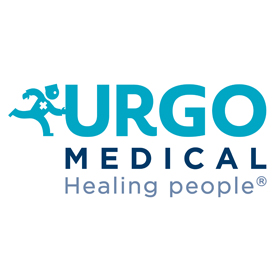Skin grafting in the treatment of hard-to-heal leg ulcers

Submitted: November 2, 2017
Accepted: November 20, 2017
Published: April 17, 2018
Accepted: November 20, 2017
Abstract Views: 857
PDF: 758
Publisher's note
All claims expressed in this article are solely those of the authors and do not necessarily represent those of their affiliated organizations, or those of the publisher, the editors and the reviewers. Any product that may be evaluated in this article or claim that may be made by its manufacturer is not guaranteed or endorsed by the publisher.
All claims expressed in this article are solely those of the authors and do not necessarily represent those of their affiliated organizations, or those of the publisher, the editors and the reviewers. Any product that may be evaluated in this article or claim that may be made by its manufacturer is not guaranteed or endorsed by the publisher.
Similar Articles
- Elia Ricci, Monica Pittarello, Clinical evaluation of the efficacy and tolerability of a new device based on of Rigenase® and polyhexanide in the treatment of chronic skin lesions , Italian Journal of Wound Care: Vol. 6 No. 2 (2022)
- Michela Crisci, Giovanni Lepore, Federica Feleppa, Alessandro Crisci, Fabiana Flagiello, Cytomorphological analysis of liquid platelet-rich fibrin produced with the DUO fixed angle centrifuge (Process, France) for use in the regenerative therapy of skin ulcers , Italian Journal of Wound Care: Vol. 7 No. 3 (2023)
- Marina Pierangeli, Giovanni Ruocco, Vanya Recchi, Valentina Cecconato, Costanza Binci, Yasmine Zavalloni, Davide Talevi, Matteo Torresetti, Giovanni Di Benedetto, Alessandro Scalise, Medical Honey in clinical practice: our experience in 75 treated cases , Italian Journal of Wound Care: Vol. 4 No. 1 (2020)
- Paola Leonardelli, Rachele Stelzer, Patient with skin injuries in home care: Advice from the expert wound care nurse. Define and standardize the process at a territorial level , Italian Journal of Wound Care: Vol. 6 No. 2 (2022)
- Paola Pini, Hello, let me introduce myself: I am the microbiota , Italian Journal of Wound Care: Vol. 6 No. 1 (2022)
- Giovanni Petracca, Francesco Zappia, Giuseppe Maccarone , Necrotizing fasciitis: A case report and a review of the literature , Italian Journal of Wound Care: Vol. 5 No. 2 (2021)
- Paola Pini, The skin microbiota and its interactions with the host , Italian Journal of Wound Care: Vol. 6 No. 1 (2022)
- Federica Buzzi, Hevan Adel Al-Atroushy, Nizar Bakir Yahya, Hozan Dilneya Rwanduzi, Stefano Maindi, Is it possible to use a 100% Medical Grade Honey in the premature babies? , Italian Journal of Wound Care: Vol. 5 No. 2 (2021)
You may also start an advanced similarity search for this article.



 https://doi.org/10.4081/ijwc.2018.18
https://doi.org/10.4081/ijwc.2018.18





